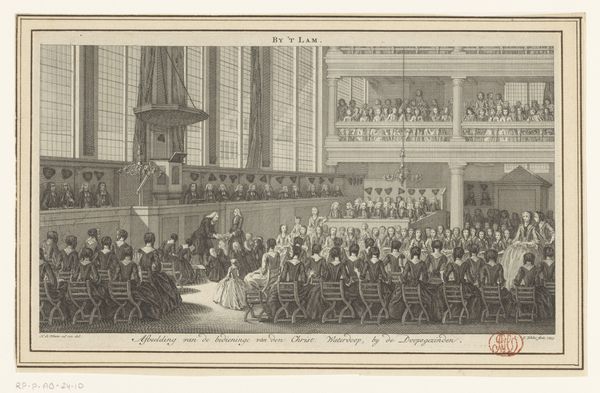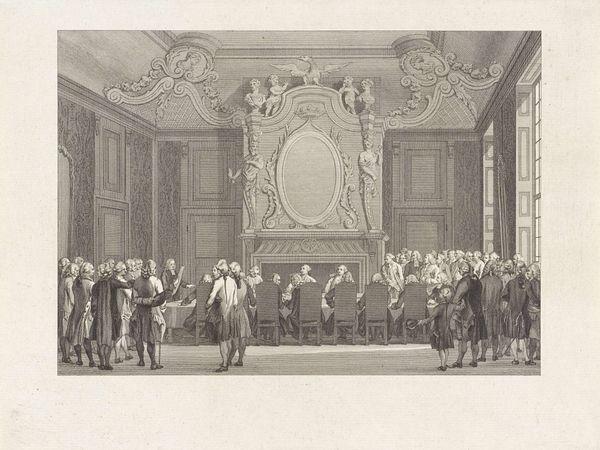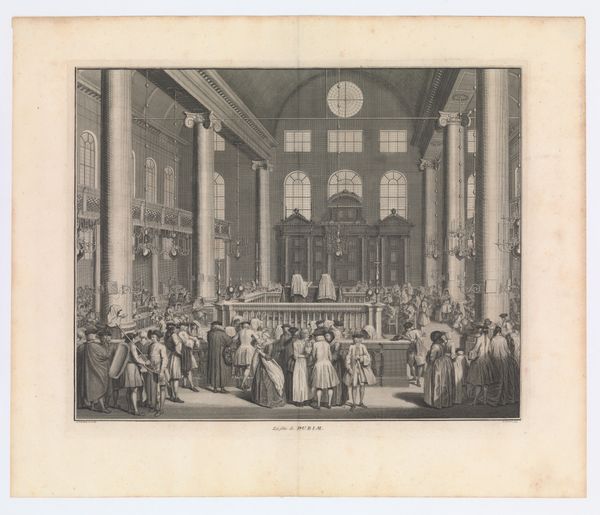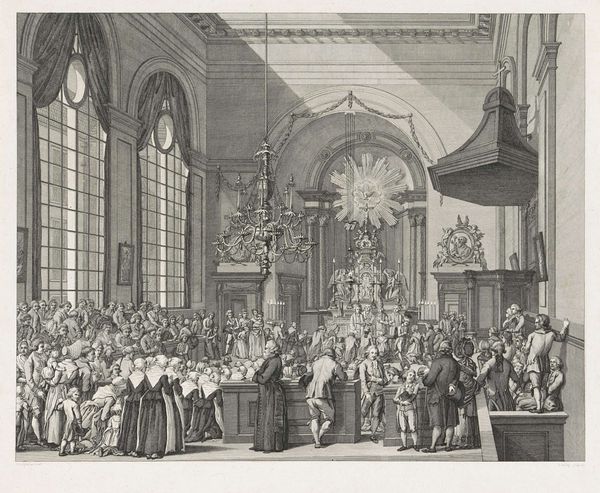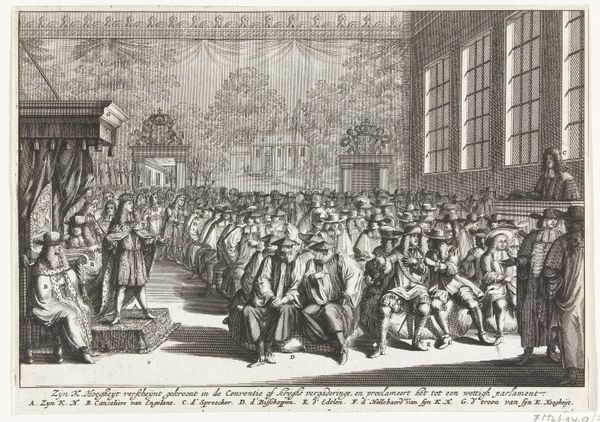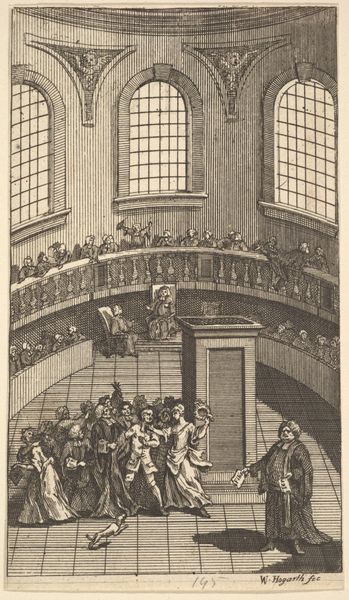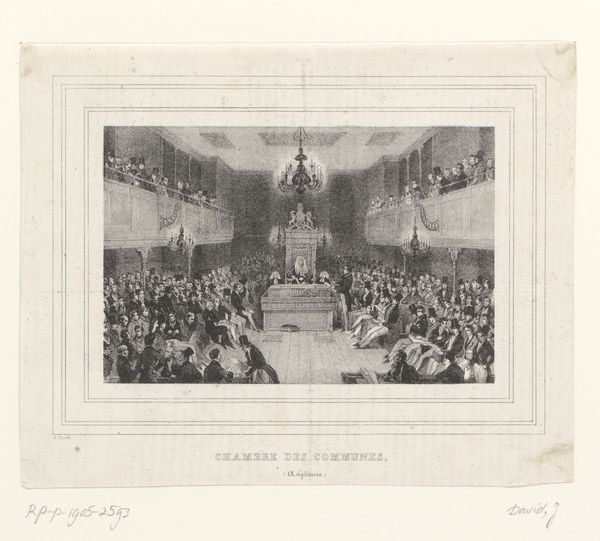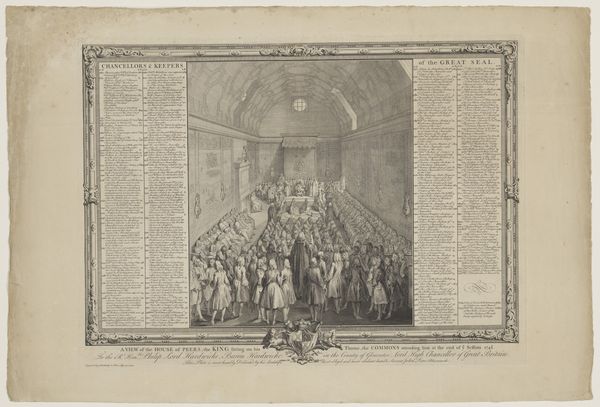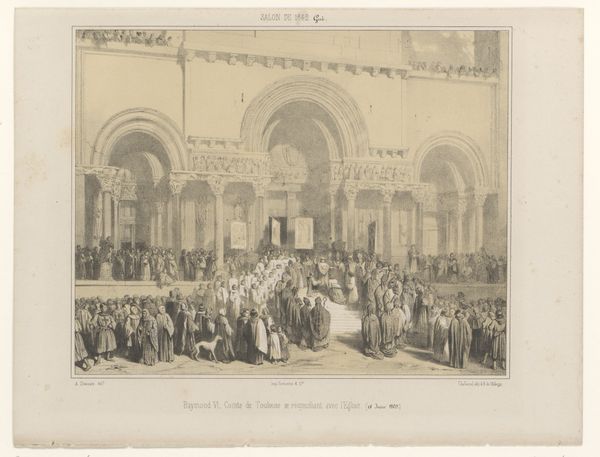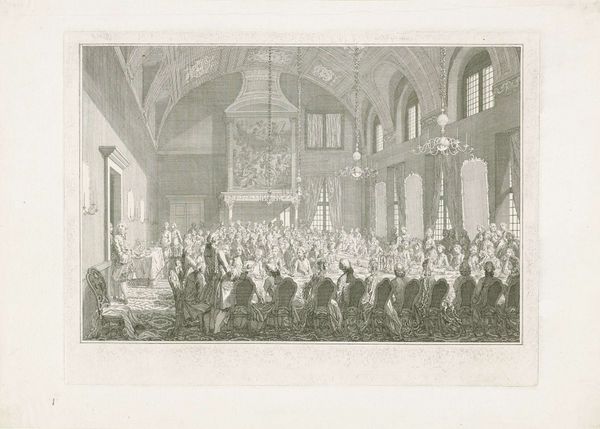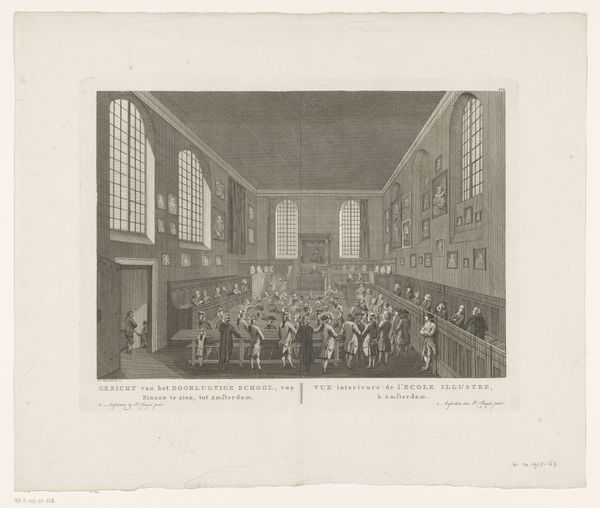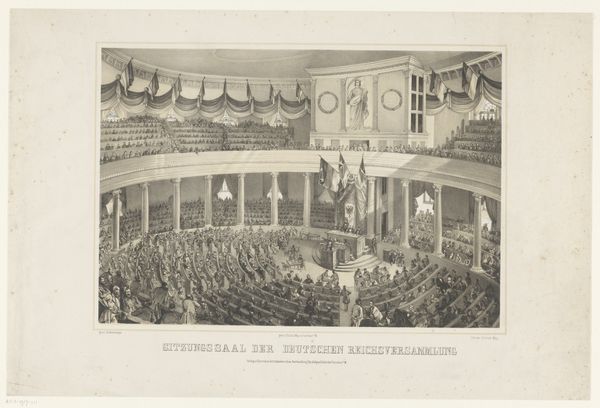
Bijeenkomst van het tweede Nederlands Letterkundig Congres te Amsterdam 1850
0:00
0:00
hendrikwilhelmuslast
Rijksmuseum
print, engraving
# print
#
genre-painting
#
history-painting
#
academic-art
#
engraving
#
realism
Dimensions: height 165 mm, width 260 mm
Copyright: Rijks Museum: Open Domain
Curator: Hendrik Wilhelmus Last created this engraving in 1850, titled "Meeting of the Second Dutch Literary Congress in Amsterdam." It’s held at the Rijksmuseum and documents an event at Felix Meritis. Editor: The perspective and light are compelling; the sharp lines emphasize the dome, windows, and individual attendees of the Congress which lends this engraving its rather formal air. Curator: It's fascinating to see these intellectual gatherings rendered through art, reflecting the social and cultural importance placed on literary discourse in the mid-19th century. It also shows how academic art sought to capture and celebrate national identity. Editor: Notice how the arrangement within the room is visualized. The podium's location highlights hierarchy and power, whilst simultaneously allowing viewers to gaze at and assess each individual attendee, no matter where their location. Curator: Precisely. These congresses aimed to standardize Dutch spelling, playing a vital role in shaping a shared national identity through language. Editor: The visual effect reminds one of theatre: there is a performance taking place upon the dais; those who watch become players within a shared, staged atmosphere. It captures the tension between individual expression and collective identity inherent in academic discourse. Curator: A good point; what's remarkable to me is seeing the physical embodiment of this quest for linguistic unity, played out in real spaces and directly impacting policy, reflecting that the architecture influences scholarly activity. Editor: Perhaps we see that it presents form; how it communicates collective organization, but also facilitates unique experiences? It would be valuable to assess if artists could depict how diverse art disciplines may unify by assessing art beyond only meaning, but structural construction also. Curator: Understanding art within a framework that considers all different forms offers us the valuable insight for looking at political and cultural identity. It gives viewers more inclusive means for interpretation, and how it shifts between epochs and ideologies. Editor: I agree. There's real value in recognizing not only the structural choices the artist used, but the socio-political frameworks in play during artistic construction.
Comments
No comments
Be the first to comment and join the conversation on the ultimate creative platform.
